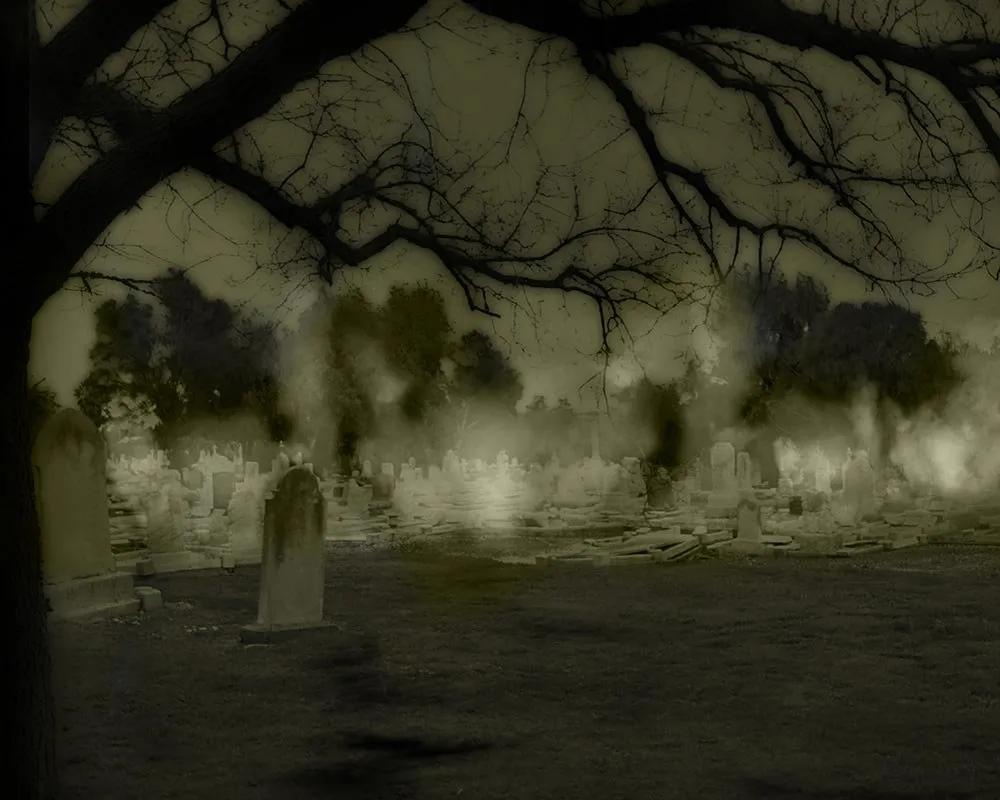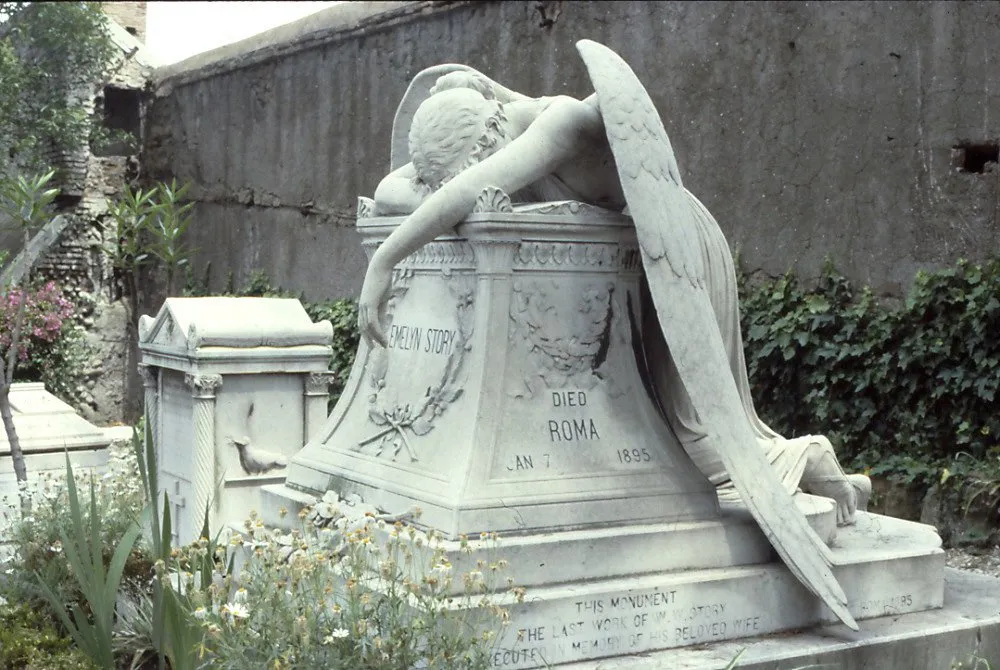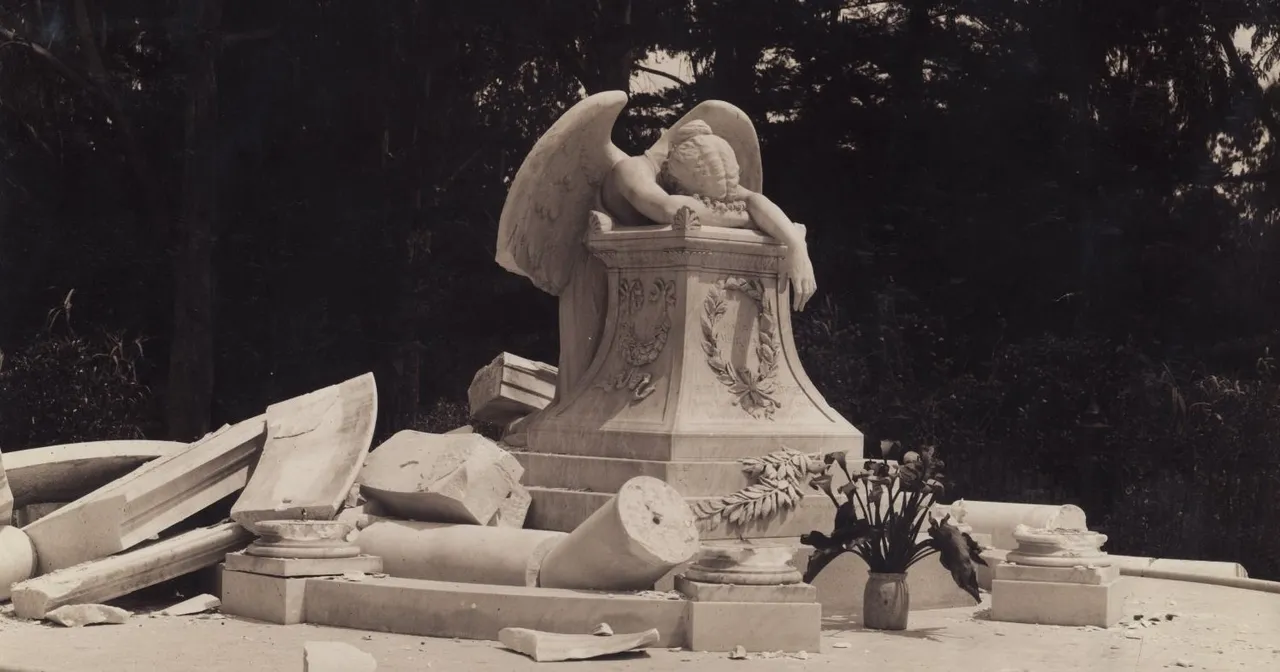'Stone as a representation of death is familiar to us through a succession of mythological unfortunates who were transformed from flesh and blood into insensate rock by incident or unwise action – a glimpse of Medusa's terrifying visage on one of her “bad hair days,” or Orpheus' backward glance on leaving Hades.'[1]
Mythology is not the only place in which stone is associated with death. The cemetery is a site where stone, rock, marble, and other naturally occurring, enduring materials mark the place at which an individual is buried. The importance of cemeteries as sites that assist in public sanitation to help stem the spread of disease, and other unwelcome eventualities that manifest as the human body decomposes should not to be forgotten, but it is not their solitary purpose. The value of the cemetery to survivors as a site where the deceased can be memorialised is important.
David Robinson, a photographer who has spent much time capturing images of European cemeteries, which are rich with magnificent and finely crafted monuments insists that: 'we should remember that despite the conventional wisdom, cemeteries exist for the living, not the dead'[2]. Many of the headstones, grave sites, and mausoleums which Robinson presents in his book Beautiful Death: the Art of the Cemetery are often littered with religious symbolism and iconography. It is important to note that a great deal of gravestones and monuments placed in cemeteries, have at the very least, some religious significance. It is impossible to not speak of death without considering the impact of religion, however, this is not the place for such a discussion. The focus here shall be on the use of stone as an enduring, yet inevitably ephemeral monument, which eventually erodes, and is forgotten, just like the individual it is supposed to render important.
‘… the European cemeteries of the nineteenth century are ways not only to reconcile oneself to the loss of a loved one but also to reassure oneself about one's own immortality’.[3]

Human beings are not immortal and while monuments and grave sites within cemeteries may prolong the period of time for which an individual is remembered or celebrated, they do not provide any guarantee of immortality. In the cemetery where my grandmother and grandfather are buried, the physical place which houses their remains, by law, will only exist, as ‘theirs’ for a mere fifty years, unless the lease is extended. While fifty years may seem like a fairly short period of time when all things are considered (with the planet Earth only being a few billion years old) – my grandparent’s deaths are likely to be shorter than their physical lives. The memory of their presence will remain with me as long as I live, but it will die with me and others who knew them. If death is supposed to be for all of eternity, why is life so dis-proportionally short?
I propose that death does not last forever. When I am gone, dead, buried and forgotten, who will remember my grandparents or other ancestors? In two or three generations, who will remember me? While it may be morbid to suggest that nobody will, it is a fact of truth that ordinary individuals cannot be remembered for completing ordinary tasks, unless they do extra-ordinary things, such as the Egyptian Pharaohs, who over four thousand years ago constructed what are still considered some of the greatest funerary monuments in human history – The Pyramids.
If, as Robinson suggests, as ordinary people we: ‘… continue to look to the nineteenth century European cemeteries for artistic beauty and for inspiration. We will continue to find there the enduring hope and unqualified optimism about eternal life.’[4] Are we not then just fooling ourselves and denying the significance of our deaths, which end our lives? Our individual lives, while generally held to be important by ourselves and those close to us, are not all that special, despite what we would like to believe. Life continues onward without others, although, their absence or loss is mourned by those who survive.
The monument as a site for mourning, quiet contemplation, or open weeping means that the loss of the living is a significant social construct. Some monuments attempt to capture such grief and images of these monuments (and indeed complete physical reproductions) are often given a new context contemporary culture.

The Angel of Grief, is a monumental sculpture at the Stanford University that marks the grave of Henry Clay Lathrop, brother of Jane Stanford. It is famous not only for its beauty as an object, but for its devastating veracity. It is a copy of a monument that was originally produced and erected in Rome by William Whitmore Story, a famous sculptor for his dead wife, Emelyn. It is described as being ‘utterly lost in desolation’[5] and by the artist himself as: ‘in utter abandonment, throwing herself with drooping wings and hidden face over a funeral altar. It represents what I feel.’[6]
The original sculpture at Stanford was damaged quite badly during an Earthquake in 1906, and it was later repaired. A photograph of the statue, with its earth-quake damaged, ruined canopy is, in my opinion more meaningful than the repaired version. The statue of The Angel of Grief at The Stanford University in the United States, was restored to a near original state in 2001, is an undeniably sorrowful and mournful artefact. The restoration of this particular monument, however, is quite interesting.
While the image of the ruined angel, surrounded by rubble is indeed full of sorrow, it becomes difficult to remember that below it, rests the body of a person, who while, unknown to me is secondary to me mourning the inanimate object – the original statue, which was ruined, and in my opinion, is more strongly representative of loss. While some traceable remains are evident and the statue can still be clearly identified, it is, through its ruin an more intensely sad and beautiful artefact.

A monument that is weathered and aged has something which a pristine, cleaned and gleaming monument does not. In his seminal text, The Work of Art in the Age of Mechanical Reproduction Walter Benjamin states that in any reproduction: ‘the quality of its presence is always depreciated.’[7]
What Benjamin refers to here is the affect of time on an object. Time generally does not treat monuments all that well, as they are, after all, made from marble, stone, or some other substance, which while enduring in comparison to human life, are ephemeral substances that erode, become covered with lichen, and gain the appearance of being old, and in some cases, ancient.
While the Angel of Grief may have been ruined by the earthquake in 1906, it is not the only way that monuments, granite, and stone erode and fade. Vandalism remains an issue, with the 2001 restoration of The Angel of Grief at Stanford repairing, among other things, an arm that was broken off and stolen by vandals. Monuments in cemeteries fade, crack, and erode, and in some sense, encompass the beauty of their age – time, nature, wind and other forces have trailed their wake across what would otherwise be the paragon of such a thing: gleaming monuments attempting to prove that something could last forever, However, they are abject failures at this purpose, and serve as a reminder that nothing lasts forever, as Simon Gregg contends:
‘To fabricate an object is to set it immediately on the path to dissolution, because while we do our best to preserve our material heritage, it is slowly, and with resolute certainty, collapsing around us.’[8]
Nothing that we, as humans create can truly last forever. It will, sooner or later, be ruined, referred to as rubble, or turn to dust. Just because one artifact fades, is destroyed or no longer exists, it does not mean that it will not be replaced by other representations and interpretations which can be evocative of a particular memory.
References:
[1]Kastenbaum, Robert. Death, Society and Human Experience, 5th edition, Needham Heights: Allyn & Bacon / Simon & Schuster, 1995.39.
[2]David Robinson and Dean Koontz Beautiful Death: Art of the Cemetery (Penguin Books, 1996), not paginated.
[3] Ibid.
[4] Robinson, David and Koontz Dean. Beautiful Death: Art of The Cemetery. New York: Macmillan, 1974.
[5] William H. Gredts, “American Memorial Sculpture and the Protestant Cemetery in Rome.” In Italian Presence in American Art, 1860-1920. ed. Irma B Jaffe. (New York: Fordham University Press, 1989), 143.
[6] Ibid.
[7] Benjamin, Walter. Illuminations. Edited by Hannah Arendt. Translated by Harcourt Brace Jovanovich Inc. New York, Random House, 1968, 221.
[8] Simon Gregg “Ok with my decay, encounters with chronology”. Artlink, Volume 29 (March 2009): 60.
